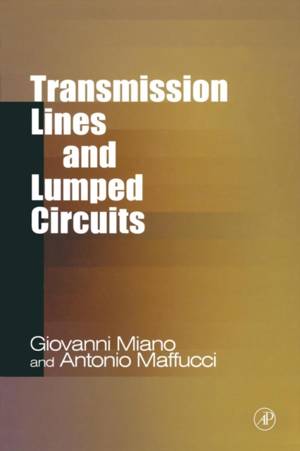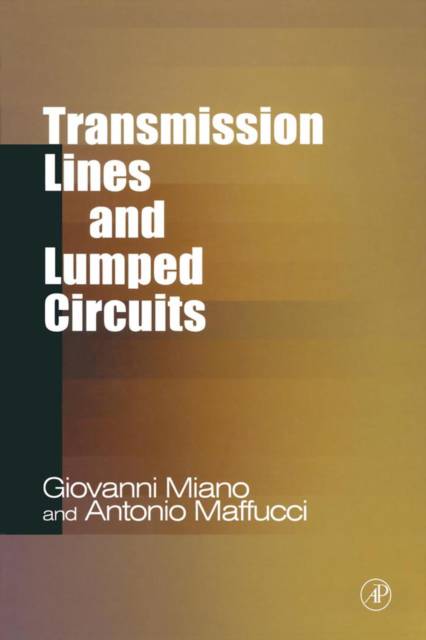
- Afhalen na 1 uur in een winkel met voorraad
- Gratis thuislevering in België vanaf € 30
- Ruim aanbod met 7 miljoen producten
- Afhalen na 1 uur in een winkel met voorraad
- Gratis thuislevering in België vanaf € 30
- Ruim aanbod met 7 miljoen producten
Zoeken
Transmission Lines and Lumped Circuits
Fundamentals and Applications
Giovanni Miano, Antonio Maffucci
€ 288,45
+ 576 punten
Omschrijving
The theory of transmission lines is a classical topic of electrical engineering. Recently this topic has received renewed attention and has been a focus of considerable research. This is because the transmisson line theory has found new and important applications in the area of high-speed VLSI interconnects, while it has retained its significance in the area of power transmission. In many applications, transmission lines are connected to nonlinear circuits. For instance, interconnects of high-speed VLSI chips can be modelled as transmission lines loaded with nonlinear elements. These nonlinearities may lead to many new effects such as instability, chaos, generation of higher order harmonics, etc. The mathematical models of transmission lines with nonlinear loads consist of the linear partial differential equations describing the current and voltage dynamics along the lines together with the nonlinear boundary conditions imposed by the nonlinear loads connected to the lines. These nonlinear boundary conditions make the mathematical treatment very difficult. For this reason, the analysis of transmission lines with nonlinear loads has not been addressed adequately in the existing literature. The unique and distinct feature of the proposed book is that it will present systematic, comprehensive, and in-depth analysis of transmission lines with nonlinear loads.
Specificaties
Betrokkenen
- Auteur(s):
- Uitgeverij:
Inhoud
- Aantal bladzijden:
- 479
- Taal:
- Engels
- Reeks:
Eigenschappen
- Productcode (EAN):
- 9780121897109
- Verschijningsdatum:
- 30/01/2001
- Uitvoering:
- Hardcover
- Formaat:
- Genaaid
- Afmetingen:
- 152 mm x 229 mm
- Gewicht:
- 839 g

Alleen bij Standaard Boekhandel
+ 576 punten op je klantenkaart van Standaard Boekhandel
Beoordelingen
We publiceren alleen reviews die voldoen aan de voorwaarden voor reviews. Bekijk onze voorwaarden voor reviews.











